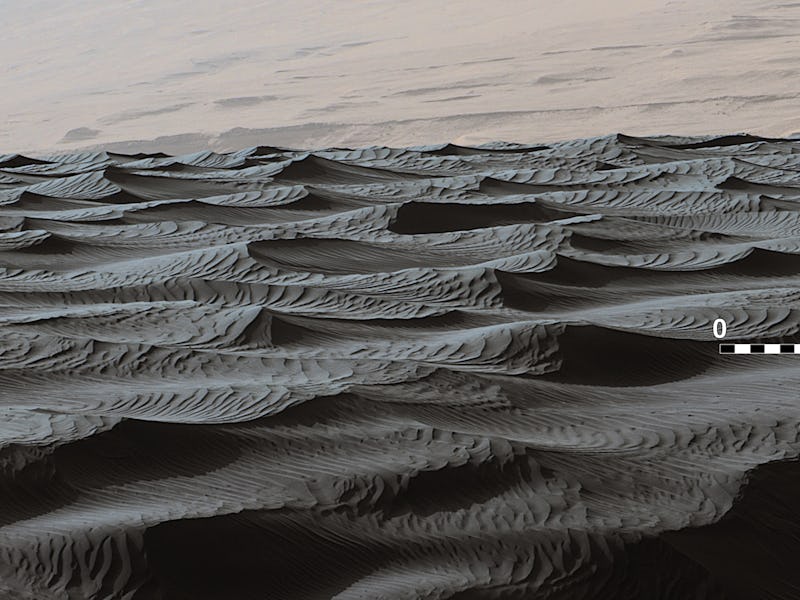
When planning your summer vacation on Mars, be sure to pack for windy conditions. In a new study from NASA, scientists have compiled data from the Curiosity rover, which has found that wind is the driving force for the red planet’s ever-changing landscape.
Curiosity’s recordings of wind patterns in the Gale Crater, a nearly 3-mile-deep bowl that spans 96 miles in diameter, illustrate a whirlwind pattern forming within the bowl, especially in the summer. This is because the sun warms the surface which prompts the air to rise in a process called convection. This process picks up sand and dust and swirls it around, shifting the intricate patterns of the sand across the planet.
Researchers have evidence to believe that the large mountain, Mount Sharp, which is 18,000 feet high, in the center of the Gale, was formed by the winds over the course of 3 billion years — or, since an asteroid took a huge chunk out of the planet.
Now, the mountain seems to be controlling the winds that formed it, changing the direction on a whim and shaping the ribbon and crescent-shaped sand dunes we see today. They’ve even recorded “dust devils,” which are tinier versions of tornados that occur on Earth. But, it is important to note that these winds are much less erosive than Earth’s, because the atmosphere is about a hundred times thinner on Mars. The planet also doesn’t have some of the main processes that create geological formations on Earth, like tectonic plate movement, tides, volcanic activity, and just simply rain. But, over time — we’re talking millions of years — even these tiny gusts can cause huge formations.
Curiosity is currently looming over the Martian dunes, determining their sediment composition and hoping to identify whether the dunes were created by the same ancient processes that formed Mount Sharp.
“We’re keeping Curiosity busy in an area with lots of sand at a season when there’s plenty of wind blowing it around,” said Curiosity Project Scientist Ashwin Vasavada of NASA’s Jet Propulsion Laboratory, Pasadena, California. “One aspect we want to learn more about is the wind’s effect on sorting sand grains with different composition. That helps us interpret modern dunes as well as ancient sandstones.”